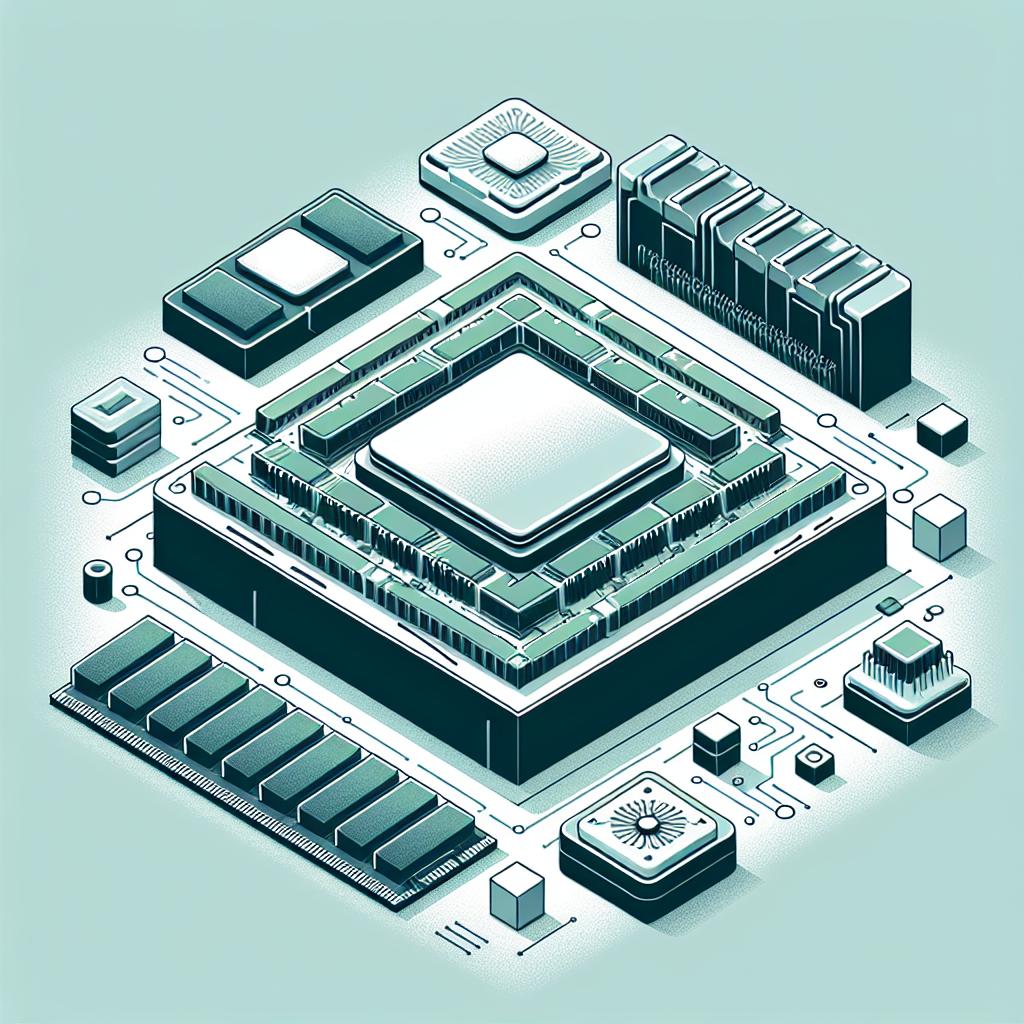
DDR5 and LPDDR6 Memory Advances Propel Computing Performance

TABLE OF CONTENTS
- Introduction
- Journalist Note
1. Introduction
Amid rapid technological advancements, multiple sources have provided insights into the ongoing development and future of memory standards. This article synthesizes the most significant updates and projections regarding DDR5 and LPDDR6 memory technologies, geared towards high-performance computing and artificial intelligence applications.
2. Journalist Note
The JEDEC Solid State Technology Association has unveiled new standards for advanced memory modules that aim to elevate the performance of high-performance computing (HPC) and artificial intelligence (AI) applications. Primarily, DDR5 Multiplexed Rank Dual Inline Memory Modules (MRDIMM) and a new-generation Compression-Attached Memory Module (CAMM) for LPDDR6 are set to bring unprecedented enhancements in bandwidth and memory capacity.
DDR5 MRDIMM technology is designed to achieve up to twice the bandwidth of the current DRAM modules, targeting a peak bandwidth of 12.8 Gbps. This is a significant boost from the 6.4 Gbps offered by existing DDR5 RDIMM memory. The new MRDIMM modules promise to maintain compatibility with existing RDIMM platforms and leverage the same pins, SPD, PMIC, and other design elements, ensuring seamless integration and performance enhancement.
Simultaneously, LPDDR6 CAMM modules are under development with a target speed of over 14.4 GT/s. These modules will feature 24-bit wide subchannels and 48-bit wide channels, supporting future HPC and mobile devices with improved efficiency and performance. The goal is to provide a versatile and powerful memory solution adaptable to various cutting-edge applications.
On a comparative note, the current DDR5 technology showcases advancements from major manufacturers such as Micron, Samsung, and SK Hynix. Micron's DDR5 devices in TeamGroup ELITE DDR5 modules, Samsung's DDR5 in G.SKILL Trident Z5 modules, and SK Hynix’s 32 GB DDR5 UDIMM present notable performance metrics. For instance, these modules deliver bandwidths ranging from 38.4 GB/s to 44.8 GB/s, depending on the specific configuration and manufacturer.
Looking ahead, DDR6 promises even more remarkable performance leaps. Speeds for DDR6 are projected to start at DDR6-8800, extending up to DDR6-17600 in its initial generation, and potentially reaching DDR6-21333 in future iterations. This represents a tenfold increase in bandwidth compared to the initial DDR4 modules, reflecting the ongoing evolution in memory technology aimed at supporting increasingly demanding computing environments.
In terms of power efficiency and security, both PC DDR6 and LPDDR6 are expected to introduce new features, including an 'efficiency mode' to reduce idle power draw. These advancements not only promise better performance but also contribute to more sustainable and secure computing experiences in various applications.
3. Glossary
3-1. JEDEC Solid State Technology Association [Organization]
JEDEC is the global leader in developing standards for the microelectronics industry. The association's recent announcements around DDR5 MRDIMM and LPDDR6 CAMM standards are set to revolutionize high-performance computing and AI applications by providing enhanced bandwidth and memory capacities.
3-2. DDR5 MRDIMM [Technology]
MRDIMM stands for Multiplexed Rank Dual Inline Memory Module. This technology is designed to double the bandwidth compared to existing DRAM modules, achieving a peak of 12.8 Gbps. Compatible with RDIMM platforms, DDR5 MRDIMM promises to significantly elevate data transfer rates and overall system performance in HPC and AI applications.
3-3. LPDDR6 CAMM [Technology]
CAMM stands for Compression-Attached Memory Module specifically designed for LPDDR6. Targeting speeds over 14.4 GT/s, LPDDR6 CAMM modules will offer wide subchannels and channels to meet the demands of future HPC and mobile devices, ensuring higher efficiency and performance.
3-4. Micron, Samsung, SK Hynix [Companies]
These leading DRAM manufacturers are pioneering DDR5 technology with their respective products, demonstrating significant performance and bandwidth improvements. Micron, Samsung, and SK Hynix's DDR5 modules cater to varied applications, reinforcing the current advancements in memory technologies.
3-5. DDR6 [Technology]
The next-generation memory standard, DDR6, promises radically improved performance with speeds beginning at DDR6-8800 and potentially reaching DDR6-21333. Alongside increased bandwidth, DDR6 aims to introduce better energy efficiency and security features, positioning it as a future cornerstone for advanced computing systems.
4. Source Documents
- MRDIMM/MCRDIMM to be the New Sought-Afters in Memory Field | TrendForce Insightshttps://www.trendforce.com/news/2024/07/29/news-mrdimmmcrdimm-to-be-the-new-sought-afters-in-memory-field/
- JEDEC Unveils Plans for DDR5 MRDIMM and LPDDR6 CAMM Standards to Propel High-Performance Computing and AIhttps://www.techpowerup.com/324791/jedec-unveils-plans-for-ddr5-mrdimm-and-lpddr6-camm-standards-to-propel-high-performance-computing-and-ai
- DDR6: everything we know about the next-gen RAM | Digital Trendshttps://www.digitaltrends.com/computing/ddr6-ram-everything-we-know-so-far/
- Industry-leading DDR5 Technology: Micron vs. Samsung ...https://www.techinsights.com/blog/industry-leading-ddr5-technology
- TechPowerUphttps://www.techpowerup.com/news-tags/JEDEC
- The Memory Wall: Past, Present, and Future of DRAMhttps://www.semianalysis.com/p/the-memory-wall